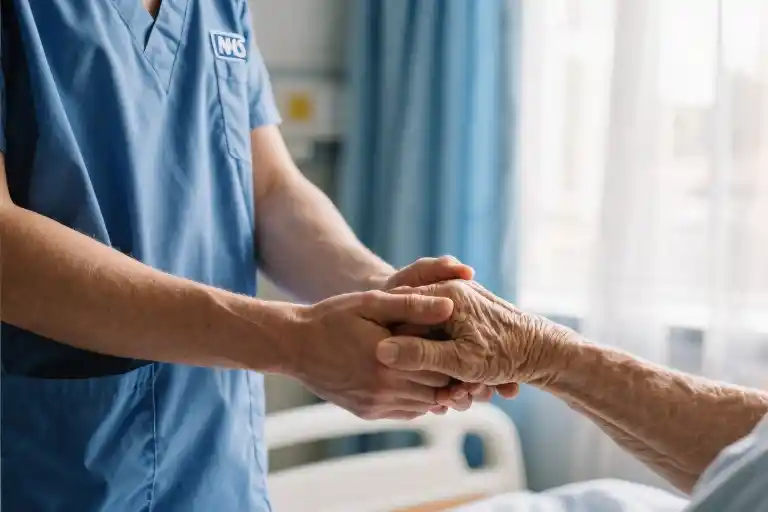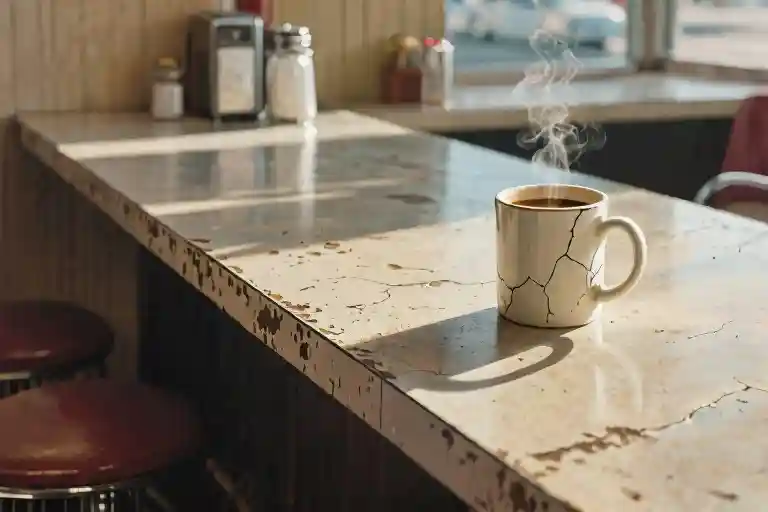The paper rustled in the question box, that flimsy cardboard portal to adolescent curiosity. I unfolded the first slip with the practiced nonchalance of someone who’d been doing this for exactly three weeks. The penciled letters jumped out at me: “Does SEX feel good?”
A bubble of laughter threatened to escape my throat. Twenty-five pairs of ninth-grade eyes tracked my every microexpression. I could practically hear their collective thought: Gotcha.
“We’ll… skip this one,” I announced, refolding the paper with exaggerated care. The classroom erupted in giggles and elbow jabs. Next question: “Cn u get a gurl pregnat from oral??” This time I answered straight-faced, though my cheeks burned. “No pregnancy risk, but STIs don’t care about your creativity.”
The condom demonstration came later. I held up the cucumber with a deadpan delivery: “Before anyone asks—no, this isn’t to scale. If you encounter one that is, scream and call the National Guard.” Even the health teacher hiding in the back snorted. Teenagers clutching cucumbers they’d never look at the same way again—just another Thursday in my AmeriCorps assignment at Fort Bragg High.
They’d hired me, a 22-year-old philosophy graduate with zero teaching credentials, to tackle the district’s teen pregnancy problem. The logic was either brilliant or catastrophically naive: Let the kid teach the kids not to have kids. What unfolded was less a structured curriculum and more a survival exercise in thinking on my feet while fielding questions like “Is it true you can’t get pregnant your first time?” (Spoiler: You absolutely can.)
Outside those cinderblock walls, Mendocino County unfolded in shades of impossible blue—ocean meeting sky in a watercolor wash that made my Midwest-raised heart ache. The beauty was almost offensive in its persistence. Fog would roll in by afternoon, swallowing whole stands of redwoods, but mornings dawned crisp with the tang of salt and seaweed. I’d drive Highway 1’s serpentine curves to school, alternating between marveling at the view and white-knuckling the wheel when logging trucks barreled past.
This was 2009, seven years before California would legalize what everyone here simply called “the crop.” Between sex ed classes, I learned to trim marijuana buds in a shack up a dirt road, fingers sticky with resin, counting grams until the magic 454 meant a wad of cash in my pocket. The town ran on it—not just the trimmers and growers, but the hardware stores selling pruning shears, the landlords accepting rent in crumpled twenties, the bars where we blew those earnings on well drinks.
Somewhere between cucumber demonstrations and fistfuls of untaxed cash, between explaining fallopian tubes to snickering sophomores and watching a patient’s chest tube drain bright red at 3am years later, I recognized the thread: danger, or the illusion of it, has always been my compass. Not the performative recklessness of bungee jumping or bar fights, but the quiet thrill of operating in spaces where mistakes carry real consequences. A teenager’s life altered by one unprotected encounter. A patient coding because you missed the rhythm change on the monitor. Even those redwood trimming sessions carried the low hum of risk—the ever-present possibility of a raid, however unlikely in a county where sheriff’s deputies reportedly owned grow operations.
The Pacific still pounds those cliffs with the same indifference. I left Mendocino for nursing school, then the ICU, trading one kind of precipice for another. But sometimes, when a trauma alert sounds or a family member asks me to explain DNR orders, I catch myself slipping into that same tone I used with wide-eyed freshmen: straightforward, unflinching, and just darkly humorous enough to make the truth bearable.
Teaching Teens and Trimming Weed
The slip of paper trembled in my hands like a live thing. Twenty-five pairs of adolescent eyes tracked my every movement as I unfolded the question: “Does SEX feel good?” My cheeks burned, but the kids needed answers more than they needed my discomfort. I set it aside with what I hoped looked like professional detachment. “Let’s come back to that one,” I said, reaching for the next submission. “Cn u get a gurl pregnat from oral??” This time, I answered straight-faced: “No pregnancy risk, but STIs don’t care about logistics.”
Fort Bragg High School’s health classroom smelled of industrial cleaner and Axe body spray. Outside the fogged windows, the Pacific Ocean churned against cliffs draped in bull kelp. Mendocino County’s beauty was almost cruel in its perfection—three hundred miles of redwood forests and rocky coastline masking the isolation that came with living at California’s ragged edge. The nearest Target was two mountain passes away.
I’d arrived six months earlier with a philosophy degree and an AmeriCorps assignment to “address teen pregnancy.” The clinic director handed me a box of condoms and a PowerPoint about fallopian tubes. “Make it stick,” she’d said. So I did—with cucumber demonstrations and wallet-sized clinic cards, answering every question from “Is 14 to young 4 sex?” to “Do u lik sex?” with the same clinical calm I’d later use to call a code blue.
Between classes, I learned the county’s other curriculum. Highway 1 wound past abandoned lumber mills to dirt roads leading into the hills. Up one such path, a shack crouched beneath ancient redwoods. Inside, five of us hunched over folding tables, fingers sticky with olive oil and cannabis resin. The Fiskars scissors in my hand clicked rhythmically—snip, snip, toss—peeling sugar leaves from dense buds. Each trimmed ounce earned enough cash to cover groceries at the co-op where no one took credit cards.
My boyfriend (now husband) taught me to judge a plant’s trim by its “bag appeal.” The better it looked, the more it fetched on the black market that buoyed Mendocino’s economy in 2009. We worked in silence mostly, the scent of pine and skunkweed thick enough to taste. Every so often, someone would weigh their haul on a digital scale. The magic number was 454 grams—one pound. Hit that, and a rubber-banded roll of twenties would appear in your palm within the week.
Back at school, I used the same hands that trimmed pounds to demonstrate condom application on zucchini. The kids howled when I deadpanned, “This vegetable is not to scale.” Their health teacher flinched at my candor, but the questions kept coming: “Dose sex hurt?” “Will the pill make you fat?” I answered them all, just as I’d later answer families asking why their loved one’s heart stopped beating.
Two economies thrived in those coastal hills—one involving cucumbers, the other involving crops that couldn’t be discussed in daylight. Both required steady hands and the ability to work under pressure. Both paid in currencies that didn’t come with W-2 forms. And both, I’d eventually realize, were training grounds for what came next—the beeping monitors and blood-soaked gauze of the ICU, where the stakes were life itself.
The ocean air still clung to my clothes when I left the trimming shed each night. Salt and resin, kelp and kush—the scents of a county that taught me danger often wears ordinary disguises.
From Cucumbers to Chest Tubes
The beeping of cardiac monitors replaced the giggles of ninth graders. Instead of condom demonstrations, I now counted chest tube outputs. The transition from sex educator to ICU nurse wasn’t as improbable as it seemed – both professions required navigating uncomfortable conversations while maintaining absolute professionalism. Just swap questions about STIs for discussions about code status.
Five years after those weed-scented cash payments in Mendocino, I found myself jogging into the cardiothoracic ICU with wrinkled scrubs and no makeup, clocking in just under the wire as usual. The stakes had changed dramatically – instead of worrying whether teens would actually use protection, I now monitored arterial lines and watched for tamponade. Yet that same adrenaline rush remained, that quiet thrill of operating in dangerous territory.
ICU nursing operates on a different timescale than teaching. One minute you’re settling a routine post-op patient, the next there’s 300 mL of blood in the chest tube collection chamber and you’re pressure-bagging units of O-negative while shouting for the OR team. The transitions happen without warning – from passing morning meds to yelling for help when the epicardial pacer loses capture and the heart rate plummets to 20. Time compresses and expands unpredictably, much like those sex ed classes where forty-five minutes could feel like eternity or pass in a blink.
What nobody prepares you for is how often you’ll stand at the intersection of life and death. One minute someone is alive, their family making vacation plans at the bedside. The next minute, you’ve turned off all the machines following that terrible conversation no family wants to have, and now they aren’t. You witness the rawest human emotions – the tears, the confusion, the bargaining – while still needing to document everything and check on your other patient. Sometimes death comes with peace and dignity. Often it doesn’t. The ICU strips away illusions about fairness or cosmic justice.
That suspended unreality first whispered to me in Mendocino. Sitting on coastal cliffs watching the sun dissolve into the Pacific, I’d feel both overwhelmed by beauty and utterly alone. The same duality exists in critical care – the miraculous save of the trauma patient who shouldn’t have survived exists alongside the senseless loss of the young mother to sepsis. Medicine, like those ocean waves, follows its own rhythms regardless of what we plan or deserve.
People ask how I went from teaching sex ed to trimming weed to running codes. The throughline isn’t immediately obvious until you recognize the pattern – I’ve always been drawn to edges. The edge of adolescence where curiosity about sex blooms. The edge of legality where cannabis operations blurred boundaries. The edge of life where medicine fights to maintain its footing. There’s clarity in these liminal spaces, an honesty that comfortable middle ground rarely provides.
Maybe it’s the adrenaline. Maybe it’s the privilege of witnessing people at their most vulnerable and real. Or maybe some of us just feel most alive when dancing close to the precipice, whether that’s fielding awkward questions from teenagers, handling unmarked cash payments, or watching a patient’s waveform go flat. The settings change, but that electric hum beneath your skin remains the same.
Now when I teach new nurses, I see that same recognition flicker across their faces when they first experience the controlled chaos of the ICU. It’s the look I imagine I had during those early sex ed classes, or sitting in that redwood shack trimming buds – the realization that you’ve found your dangerous territory, and against all logic, it feels like home.
The Edge of the Cliff
The Pacific stretched endlessly beyond the cliff’s edge, its surface catching the last amber streaks of sunset. I sat with my legs dangling over the drop, the same way I’d done five years earlier when this coastline first showed me how beauty and danger always dance together. The salt-sprayed wind carried memories of those early days – the nervous laughter of teenagers during condom demonstrations, the earthy scent of untrimmed marijuana clinging to my clothes, the metallic taste of adrenaline when a patient’s monitor first flatlined.
Some might call it recklessness, this attraction to life’s precarious edges. Teaching comprehensive sex education armed only with a philosophy degree and questionable jokes. Processing illegal cannabis in redwood shacks where the only safety protocol was olive oil on our scissors. Running toward medical crises when most would instinctively retreat. But there’s a clarity that comes with these spaces – a raw, unfiltered version of humanity that you won’t find in safer territories.
In the ICU, we have a term for patients who survive against all odds: ‘walking miracles.’ The young motorcyclist whose heart stopped three times during surgery but learned to play guitar during rehab. The overdose patient we cooled to 91°F who later became a peer counselor. These stories stick to your ribs, not just because they’re extraordinary, but because they reveal what’s possible when we stand right at the brink.
Mendocino taught me this first. The way these coastal bluffs hold firm against crashing waves mirrors how we find strength in unstable footing. That illegal trimming operation? It wasn’t just about the cash stuffed in my glove compartment. It was about watching people build entire livelihoods in the grey areas, finding community where society said there shouldn’t be any. The same magnetic pull that drew me to those folding tables in the woods later had me volunteering for the toughest ICU cases – the fresh transplants, the ECMO patients, the ones where the outcome could go either way.
Dangerous territory isn’t about thrill-seeking. It’s about presence. When you’re demonstrating proper condom use to snickering adolescents, every word matters. When you’re counting grams in an unheated cabin, focus becomes survival. And when someone’s blood pressure is dropping faster than you can hang fluids, the world narrows to just that moment. These experiences sand down your edges, teaching you to distinguish between actual risk and perceived fear.
The sun dipped below the horizon now, the ocean fading from cobalt to black. Somewhere behind me, headlights wound along Highway 1 – maybe a nurse heading to night shift, a grower making deliveries, a teenager driving to some unsupervised beach party. We were all navigating our own versions of precariousness. I stood up, brushing redwood duff from my jeans, and smiled at the realization: the girl who once blushed at ninth-grade sex questions now runs toward cracking chests without hesitation. The thread connecting those selves wasn’t recklessness, but the quiet understanding that life’s most transformative moments often happen right at the edge.
What dangerous territories have shaped you? Sometimes it’s not the cliff that changes us, but learning to sit comfortably at its edge.





